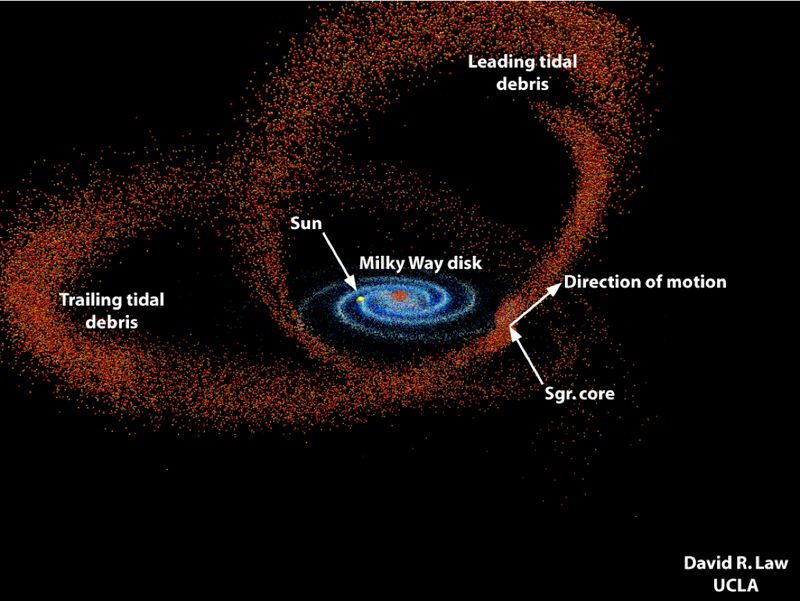You are here
First Investigation of the Local Properties of Sagittarius Stream with LAMOST Data
LAMOST Complete Spectroscopic Survey of Pointing Area (LaCoSSPAr) at the Southern Galactic Cap has good completeness and deep limiting magnitude, producing a good sample for substructures study in the halo. Recently, with LaCoSSPAr data, 106 bright member stars of Sagittarius stream have been identified by Prof. Jingkun Zhao from National Astronomical Observatories of Chinese Academy of Sciences (NAOC) and his collaborators, which provides good candidates for follow-up observations with high-resolution spectroscopy for this stream. The research result has recently been published in The Astrophysical Journal.

Figure: The orbit of the Sagittarius stream. (Credit: David R. Law)
The Sagittarius Stream (see the Figure), the debris of the Sagittarius dwarf galaxy accreted by the Milky Way, is the most prominent stellar stream around the Milky Way.
“This typical stellar stream has been widely studied by astronomers, since it can be used to constrain the Galactic potential and help us to recover the merging history between the Sagittarius dwarf galaxy and the Milky Way,” said Prof. Jingkun Zhao, the first author of the research paper. “So far, most studies on Sagittarius stream mainly focus on its global properties. However, in our work, we investigated the stream in the two local areas of LaCoSSPAr in detail.”
By combining the radial velocities from LAMOST and the proper motions from Gaia, 106 reliable member stars of Sagittarius stream were identified. The analysis results of the alpha abundance pattern indicated that the chemical evolution of the stream progenitor, namely the Sagittarius dwarf galaxy, would likely be slower than the Milky Way. Moreover, different positions of the two areas on the stream orbit enabled the study of the metallicity gradient, and the researchers found that the metallicity varied slowly along the stream orbit.
“The two areas in the Southern Galactic Cap are like magnifying glasses,” said Prof. Hong Wu, the planner of LaCoSSPAr. “They provide two small windows demonstrating the local properties of the Sagittarius stream, and are of great significance to understand the evolution of this stream.”
The paper can be accessed at https://iopscience.iop.org/article/10.3847/1538-4357/abbc1f.
